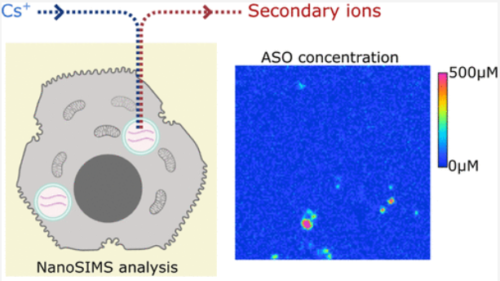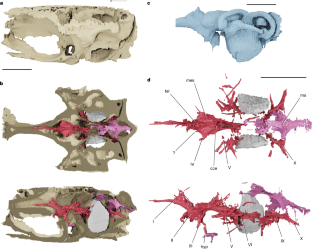スイスの科学者が開発した新しいマイクロ流体デバイスは、独自のDNA/RNA二重鎖技術を使って、SARS-CoV-2ウイルスを高い精度と速度で検出することができます。この装置は、現在進行中のCOVID-19のパンデミックとの戦いにおいて、画期的なものになる可能性があります。 A new microfluidic device developed by scientists in Switzerland can detect the SARS-CoV-2 virus with high accuracy and speed, using a unique DNA/RNA duplex technology. The device can prove to be a game-changer in the fight against the ongoing COVID-19 pandemic.
2023-02-02 スイス連邦工科大学ローザンヌ校(EPFL)
◆このたび、スイスの3つの研究機関の科学者が、SARS-CoV-2を高い精度で検出できる新しいマイクロ流体デバイスを開発しました。この装置は、SARS-CoV-2を中東呼吸器症候群コロナウイルス(MERS-CoV)などの他の呼吸器系ウイルスと区別することができ、コロナウイルスとの闘いにおいて画期的なものになる可能性を秘めています。このプロジェクトは、EPFLのSandrine Gerber-Lemaire、SUPSIのIgor Stefanini、USIのFrancesco Bertoniが中心となって進められました。
◆この装置では、DNAバイオセンサーを使って、人間の唾液に含まれるSARS-CoV-2のRNAを検出する。ウイルスRNAがDNAバイオセンサーに結合すると、DNA/RNA二重鎖が形成される。これをセンサーが検出すると、わずか10アトモルのウイルスRNAを検出することができる。ちなみに、1アトモルは、オリンピックサイズのプールの水滴に相当する。
◆この装置は、マイクロ流体工学(微小な流路を通る非常に少量の液体の流れを制御する技術)をベースにしている。マイクロ流体工学によって、新装置は唾液の流れを制御し、DNAバイオセンサーがウイルスRNAを検出することを可能にする。そして、DNA/RNA二重鎖は蛍光測定で検出されます。
◆このウイルス検出器は、医療現場以外の環境でも使用でき、10分以内に結果が得られるため、空港、学校、職場などでのポイントオブケア診断に最適です。また、SARS-CoV-2ウイルスに対する選択性が高いため、他のコロナウイルスに対する偽陽性が発生しない。
◆この装置は、COVID-19パンデミックの集団監視と緩和努力に重要な役割を果たすことができます。また、センサーのプローブに簡単な変更を加えるだけで、他のウイルスの検出にも応用できる。「Sandrine Gerber-Lemaireは、「このデバイスは非常に汎用性が高い。”バイオセンサーユニットは、他のDNAプローブ配列を選択し固定化することで、他のウイルスの検出に簡単に適応させることができます。”
<関連情報>
- https://actu.epfl.ch/news/a-microfluidic-for-detecting-sars-cov-2/
- https://www.sciencedirect.com/science/article/pii/S2590137022001959
SARS-CoV-2ウイルスのアトモラルリアルタイム検出のためのDNAバイオセンサベースのマイクロ流体プラットフォーム A DNA biosensors-based microfluidic platform for attomolar real-time detection of unamplified SARS-CoV-2 virus
Perrine Robin, Laura Barnabei, Stefano Marocco , Jacopo Pagnoncelli , Daniele Nicolis, Chiara Tarantelli, Agatino Christian Tavilla, Roberto Robortella, Luciano Cascione, Lucas Mayoraz, Céline M.A. Journot, Mounir Mensi, Francesco Bertoni, Igor Stefanini, Sandrine Gerber-Lemaire
Biosensors and Bioelectronics: X Available online: 27 December 2022
DOI:https://doi.org/10.1016/j.biosx.2022.100302

Highlights
- •A DNA-biosensor was integrated in a microfluidic device for direct SARS-CoV-2 RNA detection in human saliva samples.
- •The DNA/RNA duplex was detected via fluorescence measurements, resulting in a limit of detection of 10 aM.
- •The specificity was validated over saliva samples containing MERS coronavirus.
- •The designed sensing platform could be a potential candidate for other point-of-care diagnostics.
Abstract
The emergence of the coronavirus 2019 (COVID-19) arose the need for rapid, accurate and massive virus detection methods to control the spread of infectious diseases. In this work, a device, deployable in non-medical environments, has been developed for the detection of non-amplified SARS-CoV-2 RNA. A SARS-CoV-2 specific probe was designed and covalently immobilized at the surface of glass slides to fabricate a DNA biosensor. The resulting system was integrated in a microfluidic platform, in which viral RNA was extracted from non-treated human saliva, before hybridizing at the surface of the sensor. The formed DNA/RNA duplex was detected in presence of SYBR Green I using an opto-electronic system, based on a high-power LED and a photo multiplier tube, which convert the emitted fluorescence into an electrical signal that can be processed in less than 10 min. The limit of detection of the resulting microfluidic platform reached six copies of viral RNA per microliter of sample (equal to 10 aM) and satisfied the safety margin. The absence of non-specific adsorption and the selectivity for SARS-CoV-2 RNA were established. In addition, the designed device could be applicable for the detection of a variety of viruses by simple modification of the immobilized probe.


